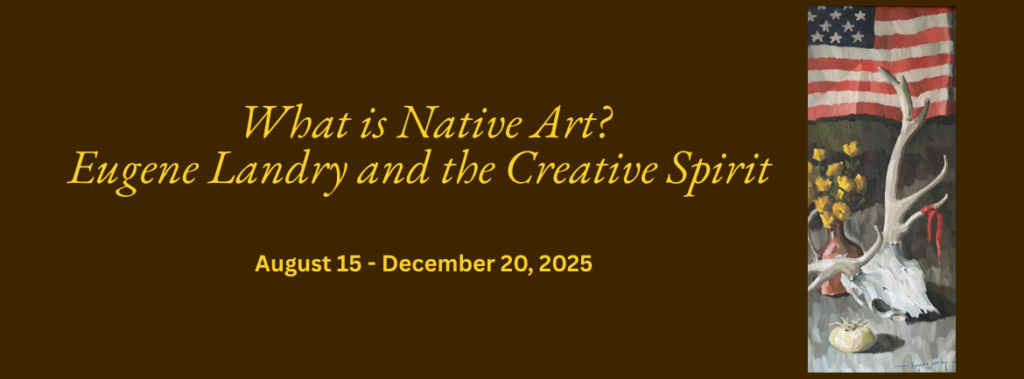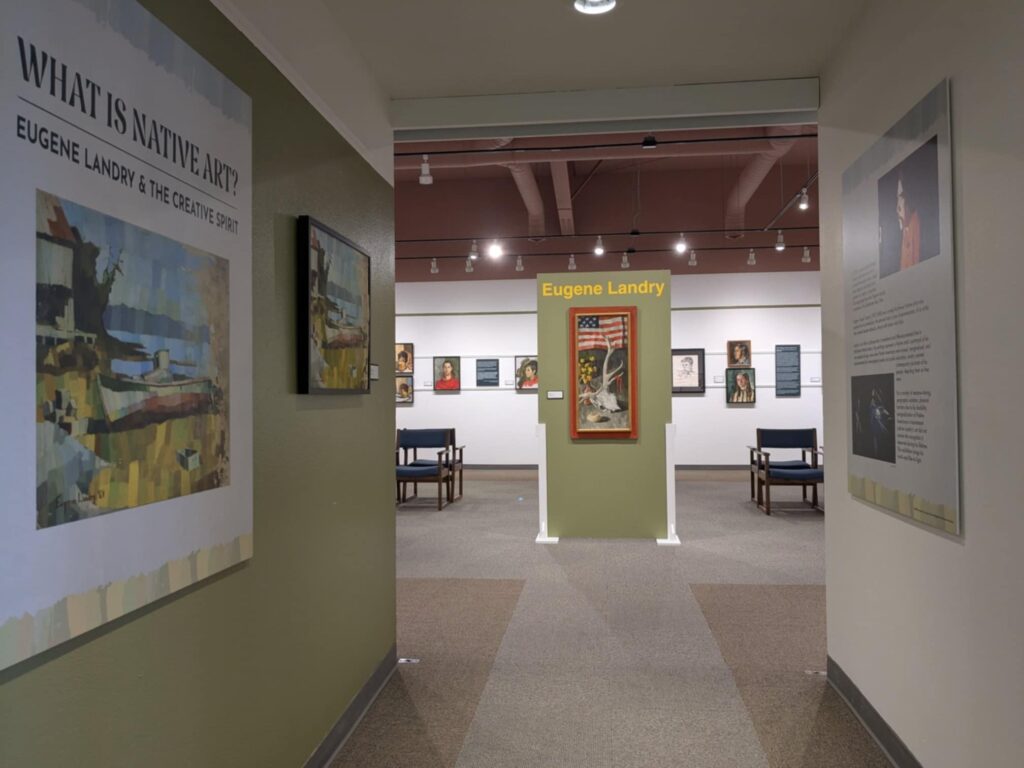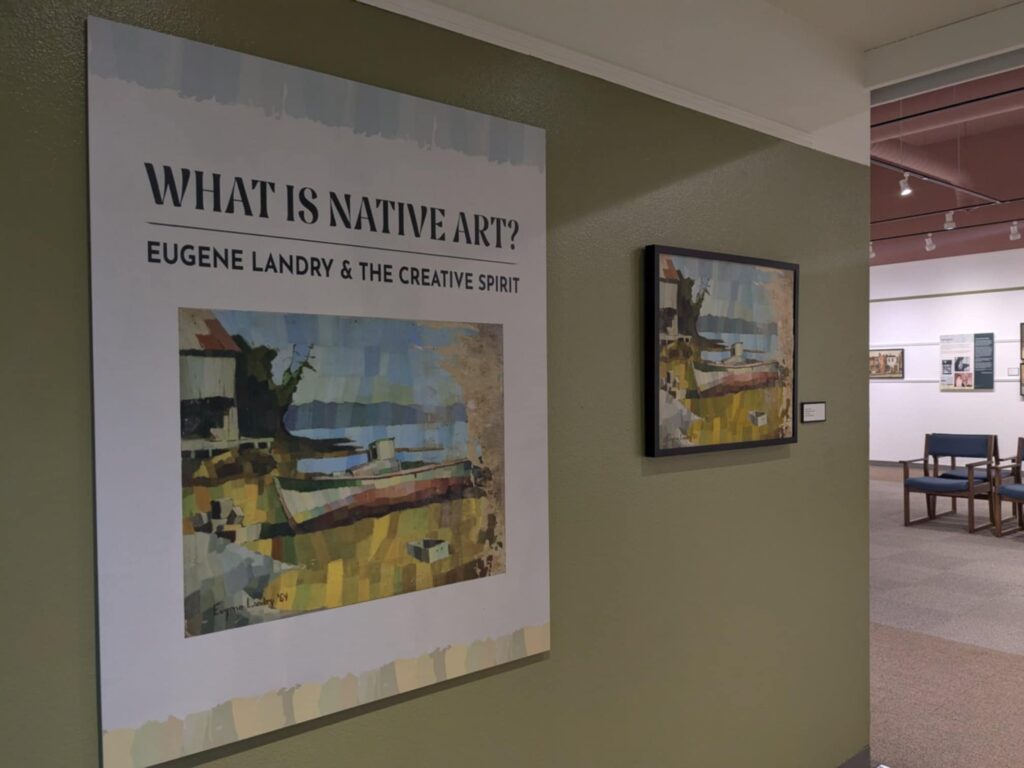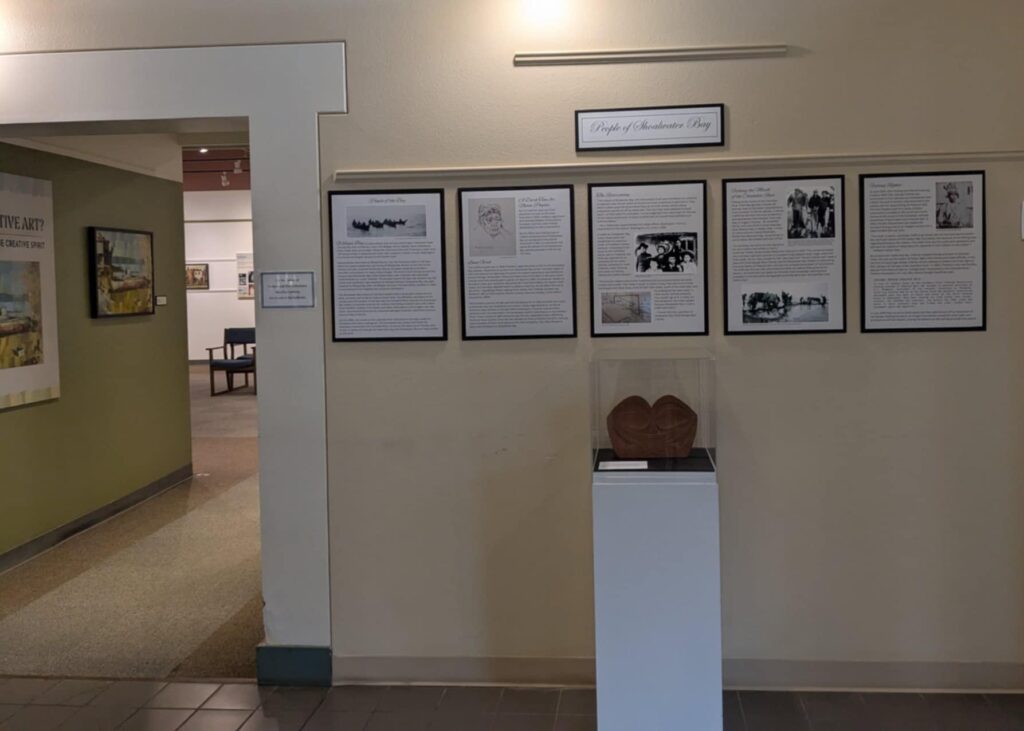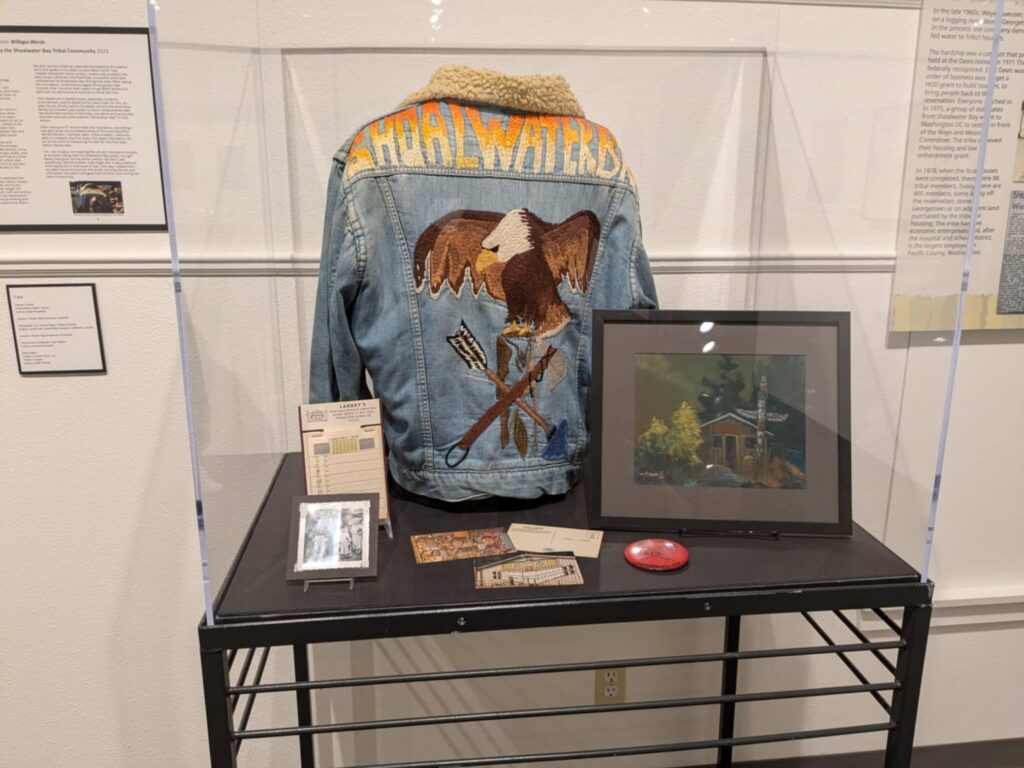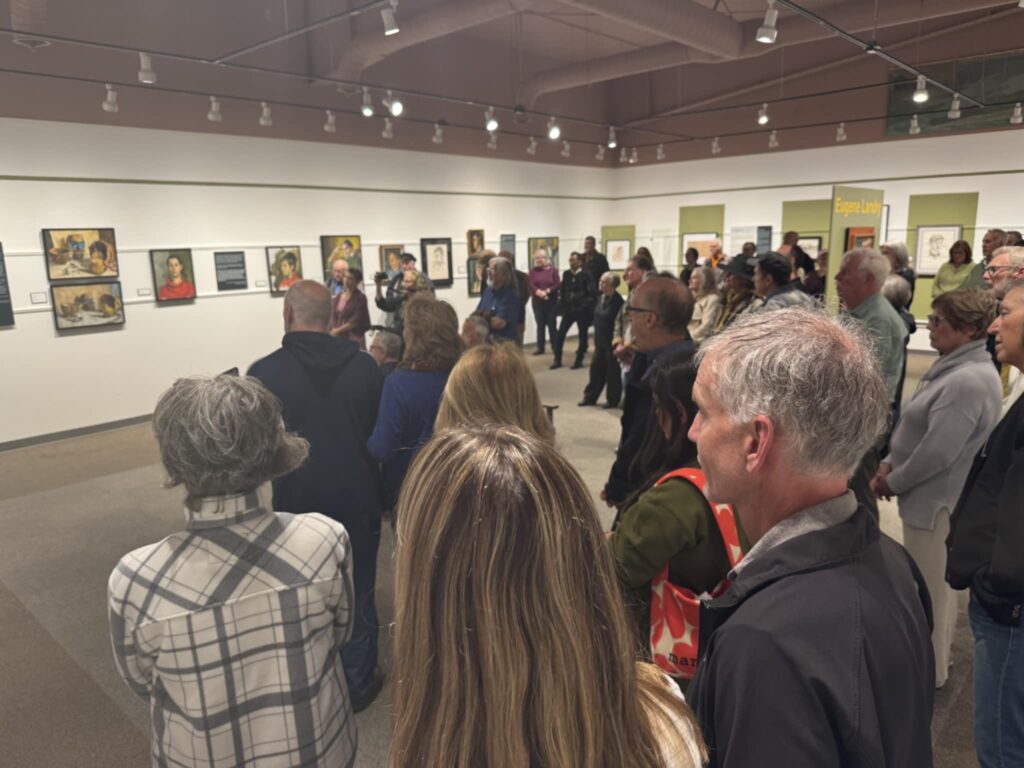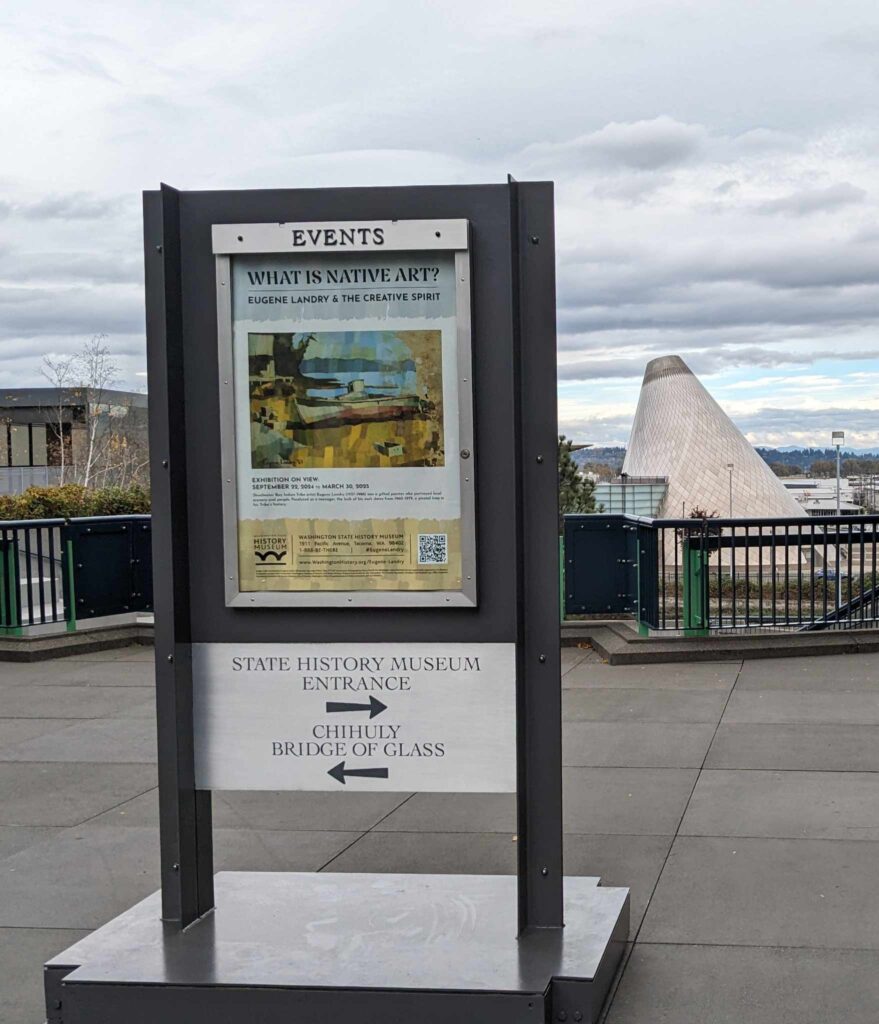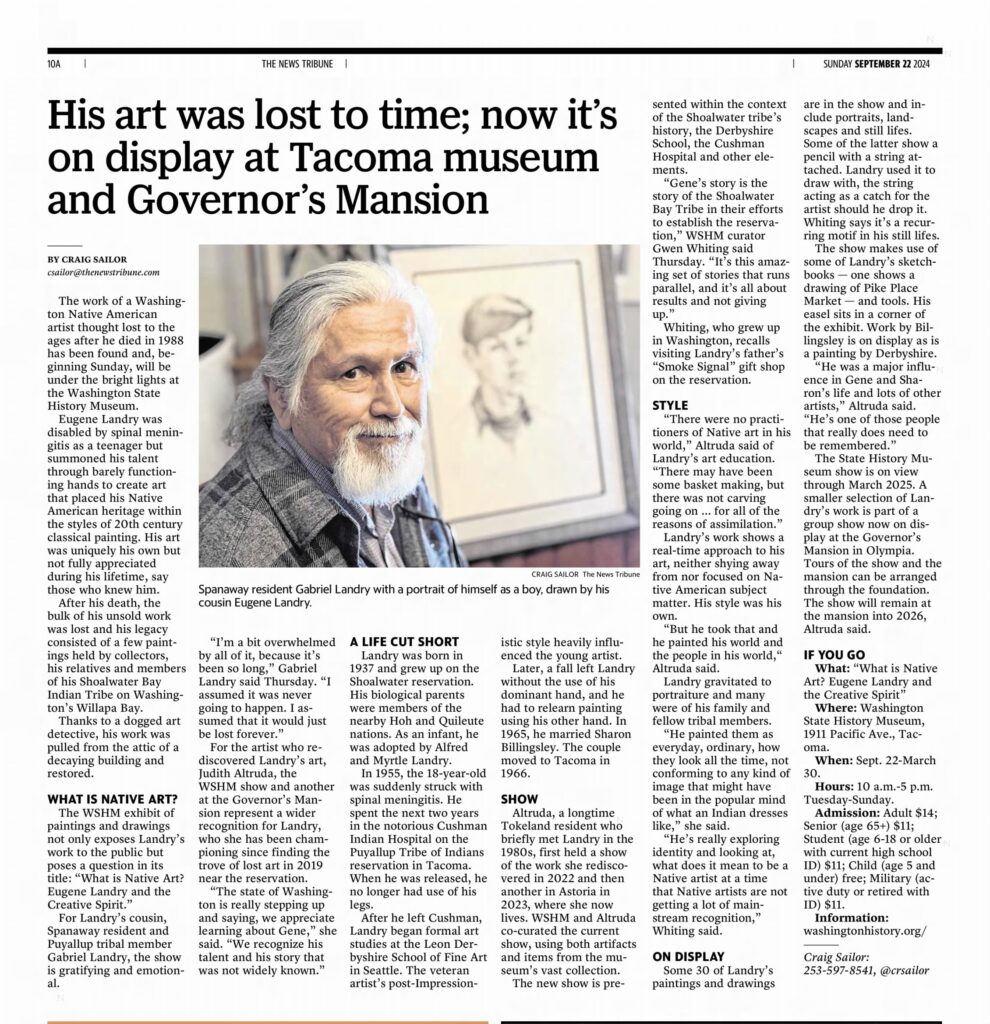by Judith Altruda | Oct 22, 2025 | Portrait of Gene

We’re delighted to share that Eugene Landry: The Exhibit at the Columbia Pacific Heritage Museum in Ilwaco, WA, has been extended through December 20. Visit the beautiful Long Beach Peninsula on Willapa Bay and enjoy this inspiring exhibition at the Heritage Museum. Admission Free.
Hours: Wednesday–Saturday, 10:00 a.m.–4:00 p.m.

by Judith Altruda | Aug 21, 2025 | Portrait of Gene

“Wounded Knee” oil on canvas 41.5″ x 21″ 1970
Eugene Landry Exhibit Returns to Pacific County
Eugene Landry’s exhibit, previously on display at the Washington State History Museum, has made a meaningful return to Pacific County. Until November 1st, visitors can experience his work at the Columbia Pacific Heritage Museum in Ilwaco. This “homecoming” is especially poignant: Landry spent much of his life in Pacific County, producing a remarkable body of work deeply rooted in the region. Among the pieces on view are portraits of Shoalwater Bay tribal relatives, painted during a pivotal moment in the tribe’s history, offering both personal and historical insight into the community he knew so well.

Visitors to the museum will see the depth and range of Landry’s work, from intimate portraits to still life paintings and sketches. Each piece reflects not only his technical skill but also his deep understanding of the people and places he painted. The exhibit offers a rare opportunity to explore the intersection of art and local history, making it both visually compelling and historically meaningful.

Interpretive panels at the Columbia Pacific Heritage Museum highlight Eugene Landry’s life and work, along with the history of the Shoalwater Bay Tribe.
Also on display are objects that tell stories beyond the canvas. Landry’s easel, recovered from the storage building where a large cache of his work was discovered in 2019, offers a tangible link to his creative process. Visitors will also see an embroidered jeans jacket that belonged to the late tribal member Randy Rosander—a poignant complement to the portrait of his mother, Joan Shipman, featured in the exhibit. Additional highlights include 1970s Shoalwater Bay Reservation memorabilia and a pastel drawing of Landry’s smoke shop by revered Tokeland artist Wally Mann, a friend and contemporary of Landry who passed away this year. Together, these pieces create a layered portrait of community, memory, and artistry in Pacific County.

Shoalwater Bay memorabilia circa 1970s

A summer storm did not keep visitors from attending the opening reception August 15th
For those who remember Eugene Landry from his years in Pacific County, this exhibition is a chance to reconnect with his legacy. For new audiences, it’s an invitation to discover a distinctive voice in Northwest art whose work continues to resonate today. Don’t miss this opportunity to experience the art, history, and stories of Pacific County—on view at the Columbia Pacific Heritage Museum through November 1st.
Museum is open Wed-Saturday, 10:00-4:00
115 SE Lake Street
Ilwaco, WA 98624
by Judith Altruda | Jan 4, 2025 | Portrait of Gene

Shoalwater Bay Tribe field trip to the Washington State History Museum, November 2024. L-R: Keven Shipman, Winona Mail Weber, Davin Culp.
More than 30 years after his death, Eugene Landry, artist, is gaining long overdue recognition. The response to his ongoing exhibits at the Governor’s Mansion and the State History Museum have been overwhelmingly positive—and personal. Many who previously had never heard of Eugene Landry, leave the exhibitions referring to him as “Gene.”
For those who knew Gene in his lifetime, seeing his art on the museum walls is especially gratifying. In November 2024, the Shoalwater Bay Tribe’s Education Department sponsored a field trip to the State History Museum in Tacoma. The stories flowed as Gene’s former portrait models toured the exhibition and recalled what life was like on the reservation in Gene’s time.
What is Native Art? Eugene Landry and the Creative Spirit will be on display through March 30 2025.
PLEASE NOTE:
From January 2 through January 12, 2025, the museum will offer discounted admission with access to special exhibitions on the fifth floor only. Exhibitions on view include “The Mountain Was Out,” “MAKERS ON THE TIDE: The Willits Brothers and Their Handmade Canoes,” “Collections Selections: A Parachute from the D.B. Cooper Investigation,” and “What is Native Art? Eugene Landry and the Creative Spirit.”
The entire museum will be closed from January 13 through February 17, 2025, to install a new permanent exhibition, “This Is Native Land.” The museum will reopen on February 18, 2025, with contained construction continuing in the Great Hall of Washington History. “This is Native Land” is set to open in the summer of 2025.
Sharing here photo highlights from the Shoalwater Bay November 2024 field trip:

Gabriel Landry with his portrait by Gene, 1966.

Tribal members loaned items of modern Shoalwater Bay history for the exhibit, such as 1970s jeans jacket embroidered with Tribal insignia. Photo by Keven Shipman.

Monty Baker, standing next to portrait of his uncle (and Gene’s cousin) Kenneth “Poggie” Baker.

Winona Mail Weber, gesturing to portrait of Nina Bumgarner, her maternal grandmother, daughter of Chief George Allen Charley.
by Judith Altruda | Nov 3, 2024 | Portrait of Gene

Landry’s exhibit at the Washington State History Museum in Tacoma will be on view until March 30 2025.

